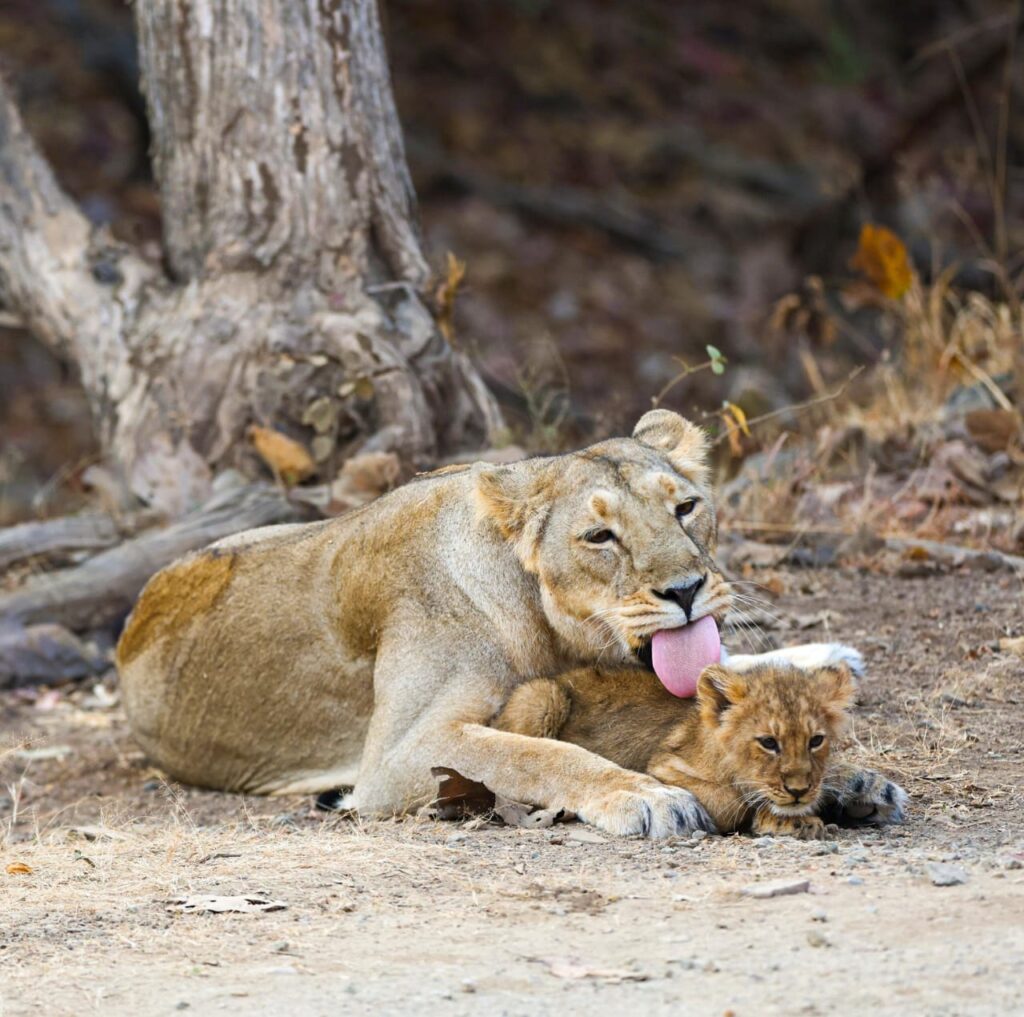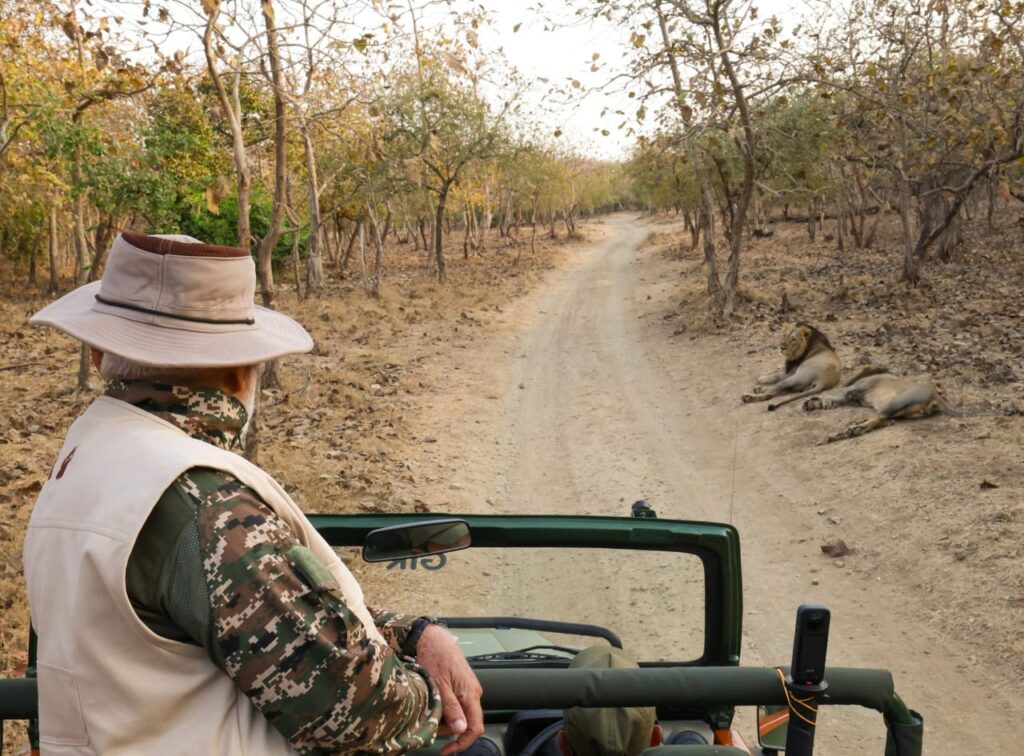On the occasion of World Wildlife Day, Prime Minister Narendra Modi took part in a remarkable event that highlighted the significance of wildlife conservation in India. PM Modi marked the day by embarking on a lion safari at the Sasan Gir National Park in Gujarat, home to the majestic Asiatic lions. This visit not only celebrated the rich biodiversity of India but also underscored the importance of preserving endangered species and their natural habitats. With the Sasan Gir Sanctuary being one of the most prominent conservation areas for Asiatic lions, the Prime Minister’s visit was symbolic of India’s commitment to wildlife protection.
The occasion of World Wildlife Day, observed on March 3 every year, is a global celebration dedicated to raising awareness about the importance of biodiversity and the protection of wildlife. This year, the theme focused on “Wildlife Conservation for Sustainable Development,” and PM Modi’s participation in the lion safari was a poignant reminder of India’s efforts to ensure the survival of endangered species, particularly the Asiatic lion.
Sasan Gir: A Sanctuary for Asiatic Lions
Located in the western state of Gujarat, the Sasan Gir National Park is the last refuge of the Asiatic lion, a species that once roamed the entire Middle East and parts of India. The lion population, which faced a dramatic decline in the early 20th century due to hunting and habitat destruction, has now made a remarkable recovery, thanks to focused conservation efforts over the last few decades. Sasan Gir National Park, spread over 1,412 square kilometers, has become a global symbol of successful wildlife conservation, with over 600 Asiatic lions residing in the park.
The park is not just home to lions, but also boasts a rich variety of flora and fauna, including leopards, antelopes, hyenas, and a variety of birds. The lion safari at Sasan Gir offers visitors a rare opportunity to witness these magnificent creatures in their natural habitat, contributing to both wildlife tourism and the local economy. PM Modi’s visit to the sanctuary reaffirmed the government’s ongoing support for conservation initiatives in the region.
The Significance of PM Modi’s Visit
PM Modi’s lion safari was more than just a symbolic gesture. It highlighted his government’s ongoing commitment to wildlife conservation, particularly the protection of endangered species. During the visit, the Prime Minister interacted with forest officials, conservationists, and local communities involved in preserving the lion population. He praised the efforts of the state government and local communities in ensuring the protection and growth of the lion population over the years.
In addition to the lion safari, the Prime Minister also emphasized the role of sustainable development in conservation efforts. He spoke about the need for balancing wildlife conservation with the socio-economic needs of local communities, which rely on natural resources for their livelihoods. The visit underscored how India is progressing with conservation policies that involve local communities, making them active participants in safeguarding wildlife and their habitats.




Efforts to Save the Asiatic Lion
The Asiatic lion is a symbol of India’s conservation success, and its recovery is the result of dedicated conservation programs, including strict protection laws, habitat management, and community involvement. The Gir National Park is equipped with state-of-the-art facilities, including anti-poaching measures, and the area has been declared a protected area under India’s wildlife protection laws.
In 2013, the Indian government introduced the “Asiatic Lion Conservation Project,” which focused on conserving the species through scientific monitoring, habitat improvement, and the establishment of a robust anti-poaching network. These efforts have resulted in an increase in the lion population, with Sasan Gir being the key focal point for the successful revival of the Asiatic lion.
Despite these successes, the Asiatic lion remains vulnerable due to the limited distribution of their habitat, which could leave them at risk of disease outbreaks or natural disasters. The Prime Minister’s visit is seen as a call to increase efforts to expand the lion’s range beyond Gujarat, including potential relocation to other regions in India to ensure their long-term survival. The ongoing efforts of the Gujarat Forest Department and the support of the national government have made Sasan Gir a shining example of what can be achieved when people, conservationists, and governments work together to protect wildlife.
Promoting Eco-Tourism and Sustainable Development
One of the significant aspects of PM Modi’s visit to Sasan Gir was the focus on promoting eco-tourism. The lion safari is a key tourist attraction in Gujarat, drawing thousands of visitors from around the world each year. Eco-tourism not only provides a sustainable source of income for local communities but also raises awareness about the importance of wildlife conservation.
The success of the lion safari at Gir is a testament to the growing recognition of eco-tourism’s role in conservation. PM Modi’s visit highlighted how sustainable tourism can benefit both wildlife and communities, creating a win-win scenario where conservation efforts are directly linked to local economic development. The income generated from eco-tourism helps fund further conservation projects and provides incentives for local people to become more involved in protecting their environment.
The Role of Technology in Conservation
During his visit, PM Modi also spoke about the role of technology in wildlife conservation. India has been increasingly using technology such as satellite tracking, drones, and camera traps to monitor the movements of wildlife and prevent poaching. The use of these advanced tools has made conservation efforts more effective and efficient. By combining traditional conservation methods with modern technology, India is making significant strides in protecting its rich biodiversity.
FOLLOW:https://newsroom47.com/reliance-industries-faces-3-drop/
Newsroom 47
